Last Updated on August 2, 2021
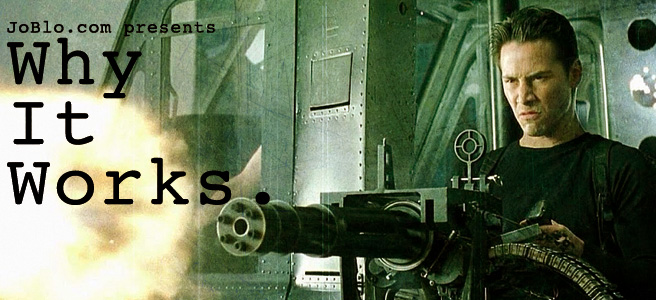 Why It Works is an ongoing column which breaks down some of the most acclaimed films in history and explores what makes them so iconic, groundbreaking, and memorable.
Why It Works is an ongoing column which breaks down some of the most acclaimed films in history and explores what makes them so iconic, groundbreaking, and memorable.
****SPOILERS AHEAD****
“Follow the white rabbit.” THE MATRIX makes no bones about being an age old hero’s journey, as this and many other of its Alice In Wonderland references demonstrate. Hell, the main character even goes through the looking glass to wake up (or rather the looking glass goes through him). Toss in a bit of Cartesian philosophy. mind bending action sequences, and more leather than you can shake a red pill at, however, and a standard fairy tale becomes one of the most influential films of the past twenty years. Here’s why it works:
WHY WE LIKE THE CHARACTERS:
Just like we discussed with the narrator in FIGHT CLUB in Why It Works’ previous installment, we’re a sucker for the frustrated everyman. Many of us spend 40+ hours a week sitting in an office thinking about all the ways in which we could achieve greatness if we only had the chance, so it doesn’t take long for us to identify with the restless Thomas A. Anderson and cherish the chance to live vicariously through him. It should also be noted how perfect Keanu Reeves is for a role like this. Brad Pitt, Will Smith, and Tom Cruise (all of whom were considered for the role) emanate a natural confidence, so it’s easy to see them as the hero right at the onset of the story. Keanu is charming to be sure, but he brings a certain innocence to the role, which, as with Harry Potter or Luke Skywalker, makes his rise to greatness that much more exciting.
Sadly, Morpheus and Trinity aren’t the most three dimensional characters ever put on film. That said, it’s both fun and necessary to have characters who already have their shit together on the winning side, and their belief in and affection for Neo gives their overall stiffness a huge pass. Ironically, the delightfully hammy Agent Smith is probably the most fun character in the film, with Hugo Weaving‘s chaotic-but-contained performance earning the character a spot on the list of most imitated movie villains. Finally, Cypher, the Oracle, and the 1980’s crew of the Nebuchadnezzar help bring some levity and humanity to the cast. (one of the many reasons why Joey Pants should be in every movie).
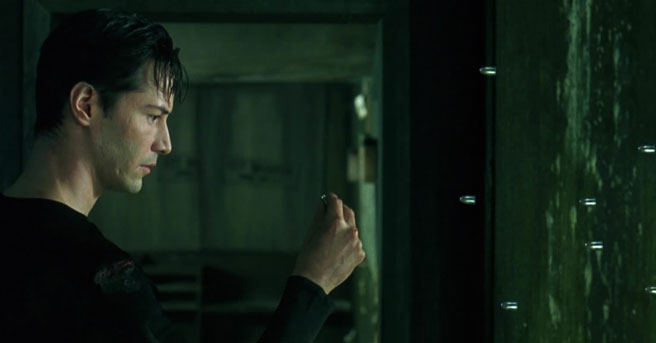 How many other actors can make stopping bullets look like an “aw, shucks” moment?
How many other actors can make stopping bullets look like an “aw, shucks” moment?
WHY WE CARE:
From an entertainment perspective alone, the opening sequence of THE MATRIX is enough to keep just about anyone tuned in. Beyond Trinity’s ass kicking and narrow escape, however, we are also introduced to all the main ideas of the movie within the first few minutes. The opening dialogue between Trinity and Cypher makes mention of Morpheus and someone he believes to be “the one.” The subsequent action sequence introduces the agents, who, along with Trinity, seem to have a super human strength (the reaction from the cops to these characters shows that this isn’t just some superhuman world). Finally, our first introduction to Neo teases the existence of “the Matrix” and a mysterious quest awaiting him. By the time the story gets going, we know the rabbit hole extends beyond whether or not Mr. Anderson will ever be able to get to work on time.
Moreoever, the way any fantasy movie pulls us regular schmoes in is by introducing the world to us as it is being introduced to the protagonist. Neo voices our disbelief and sense of wonder, which connects us all the more to our hero. If we were shown the plot of the movie through Trinity’s point of view, for instance, we would have a much harder time connecting to the world or the protagonist, and Neo would seem like some odd, ineffectual wrench in the works rather than our savior. Essentially, we need someone on the screen to say “whoa” for us.
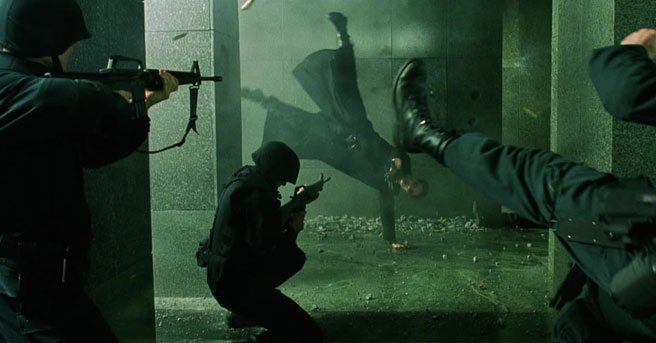 I could totally do that. I just don’t feel like it right now.
I could totally do that. I just don’t feel like it right now.
WHY WE’RE SATISFIED:
Most fantasy/superhero movies either take place in an extraordinary world or ask us to believe our world has an underground population of wizards, men in black, mutants, etc. Even other “plug and play” sci-fi movies like STRANGE DAYS and EXISTENZ focus on the real world, with the digital world taking a backseat. By focusing on what we consider to be the real world, THE MATRIX forces us to question our own reality and lets us dream about the “what if.” The same way every zombie movie makes you start checking buildings for escape routes and weaponry, the Wachowskis’ masterpiece gives you a minor panic attack every time you get that feeling of déjà vu and has you wondering if you could make the jump to that other rooftop if you just believed in yourself enough (don’t try this at home, kids).
It also doesn’t hurt that our “what if” fantasy sees our heroes kicking all kinds of ass in the world we mosey through on a daily basis. In a short span of time, we see Neo go from that awkward guy in the next cubicle to a bullet dodging ninja. Once the hero is up to speed with Morpheus and Trinity, however, we see him conquer his reality beyond anyone’s expectations. At this point, we start to see the story through Morpheus and Trinity’s eyes as they marvel at their new messiah’s rise to power. Every time we think we’ve seen Neo hit his apex, he survives several shots to the chest, stops bullets mid-flight, and, wait for it, explodes a dude from the inside. Okay, that’s it right? Wrong. Once the story hits its climax and we’re in cooldown mode, we’re still treated to a final shot of our hero flying away. FLYING?! Oh, man. I can’t wait to see that sequel. There’s no way it’ll be confusing, ridiculous, or feature a slow motion bump and grind sequence, right? RIGHT??
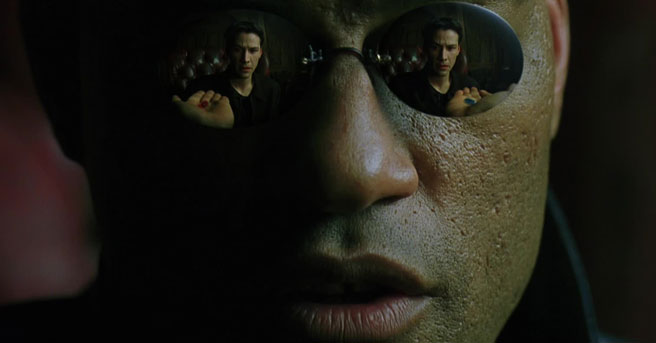 “You take the red pill, you stay in Wonderland, and I show you how deep the rabbit hole goes.”
“You take the red pill, you stay in Wonderland, and I show you how deep the rabbit hole goes.”
WHY WE REMEMBER:
If there’s one thing Hollywood will probably always be guilty of, it’s the constant copycat mentality. Movie A stuns audiences, so movies B, C, D, E, and F are made the following year in an attempt to be as similar to movie A as possible, when what really made movie A so effective was the fact that it was unlike anything else we’ve ever seen. Cue THE MATRIX. A short 16 years later, plenty of the concepts and visuals of the film seem fairly commonplace now that countless movies, TV shows, and video games have borrowed and sometimes improved upon so many of these techniques. The tricky thing here is that a thirteen year old kid watching THE MATRIX today may not know any of this, so coming first can’t be what gives a movie its staying power. What sets THE MATRIX aside from most of its progeny is the addition of philosophy, style, and humor to the action-rich plot. In the midst of keeping us on the edge of our sets, the Wachowskis have us questioning reality, shopping for long coats and thin sunglasses, telling everyone we meet that we know kung fu, and trying to replicate a certain “cool factor” that can’t be calculated by a team of Hollywood executives.
Thoughts? What else worked for you? What didn’t? Strike back below!
If you have any movies you’d like to see put under the microscope, let us know below or send me an email at [email protected].


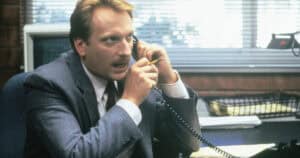

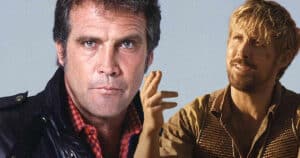
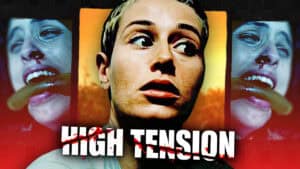
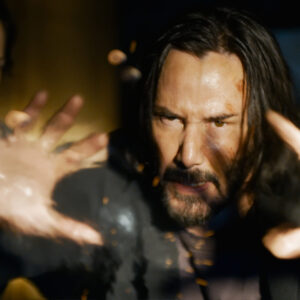
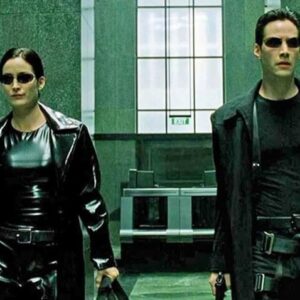


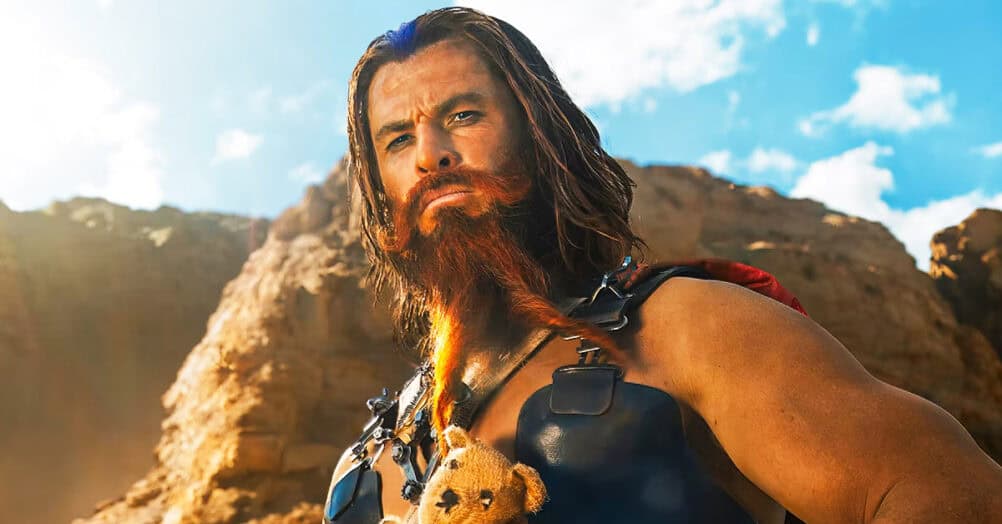
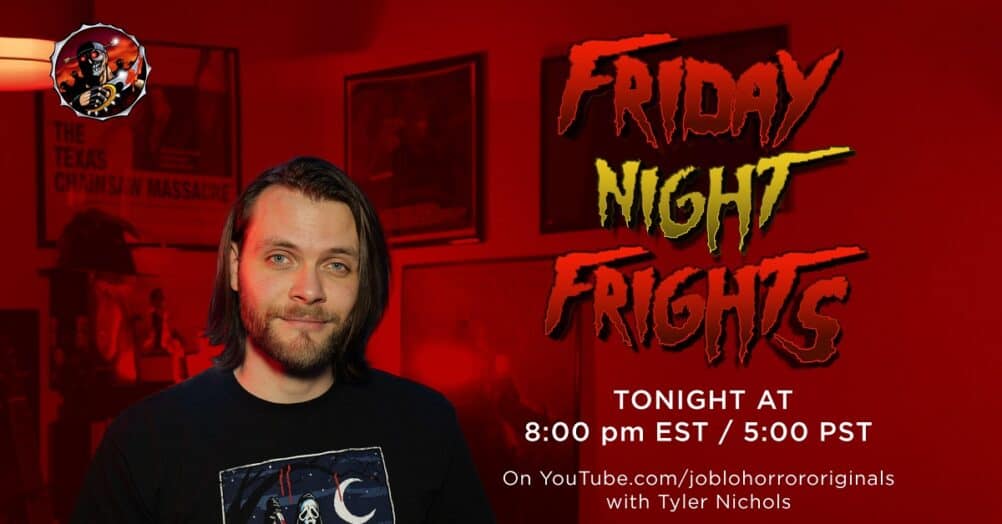
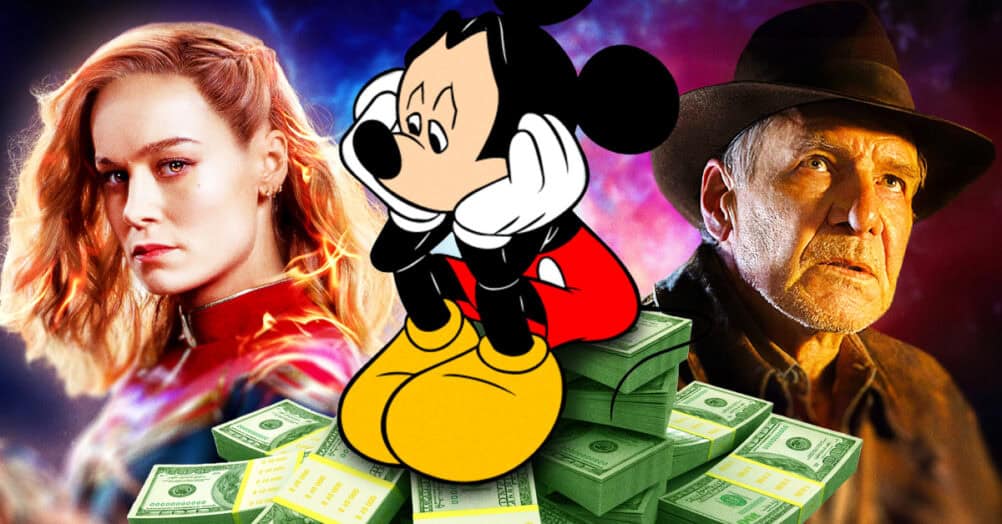
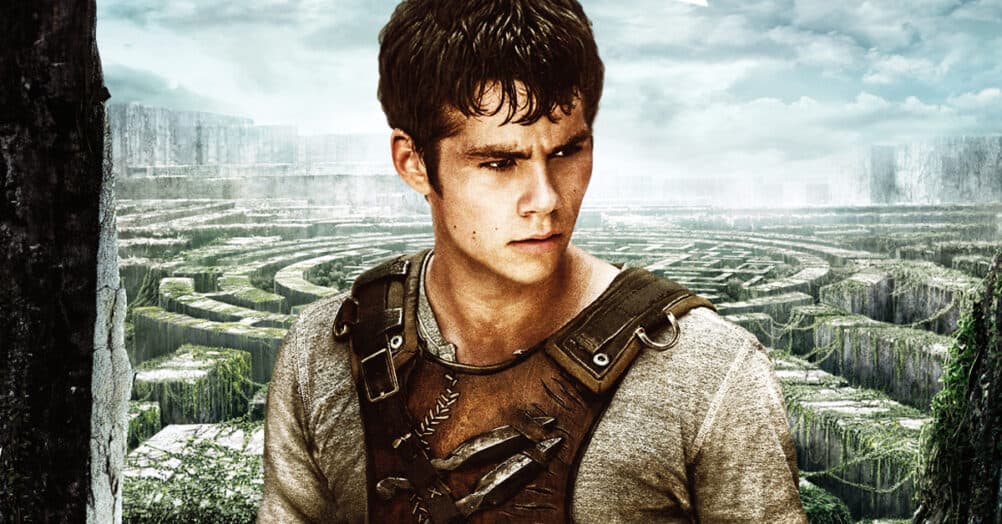
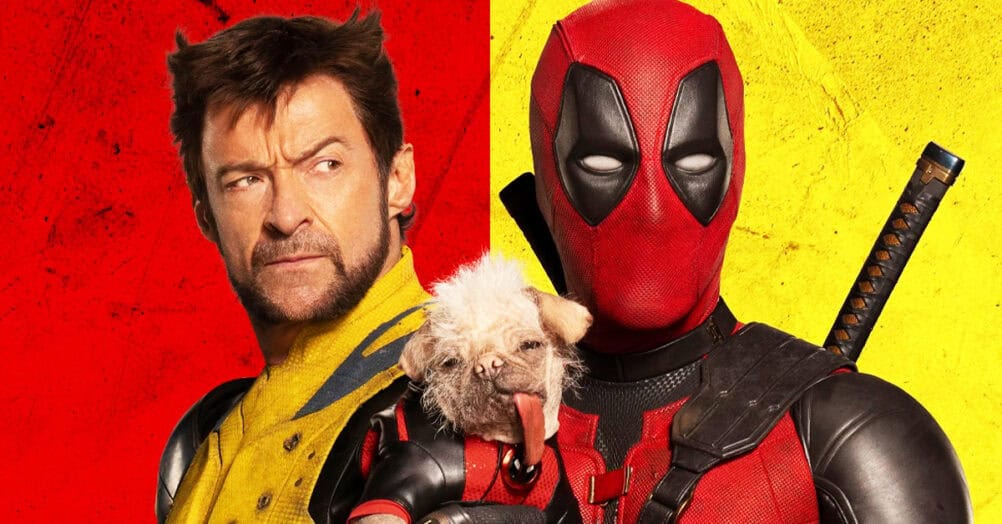
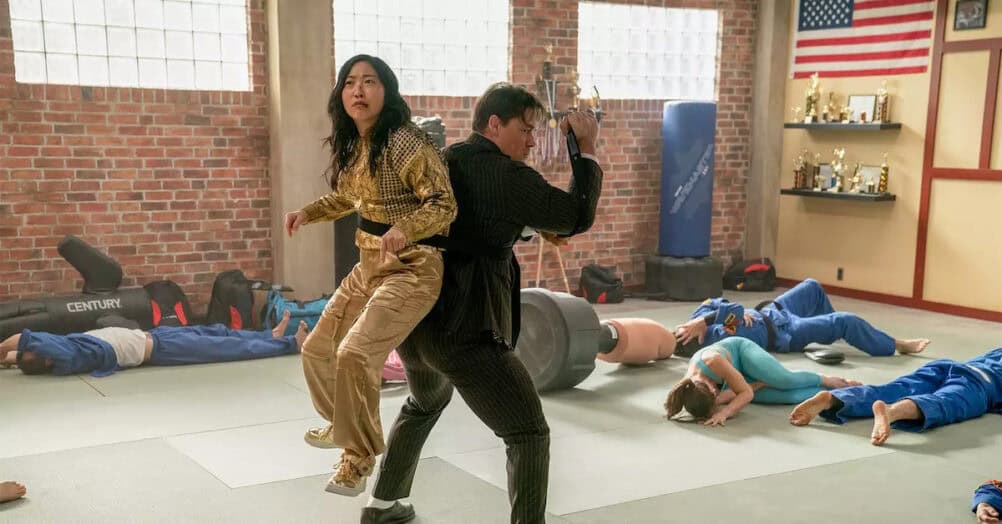
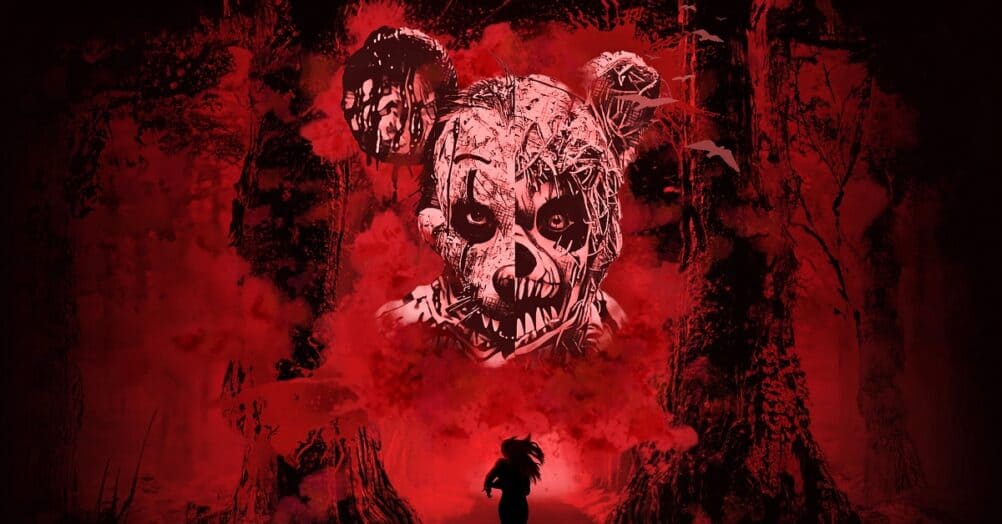
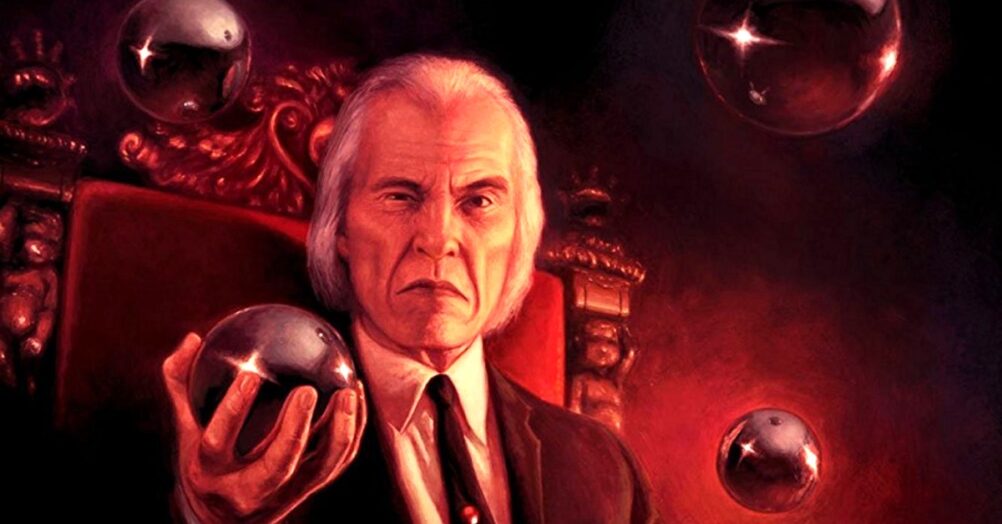
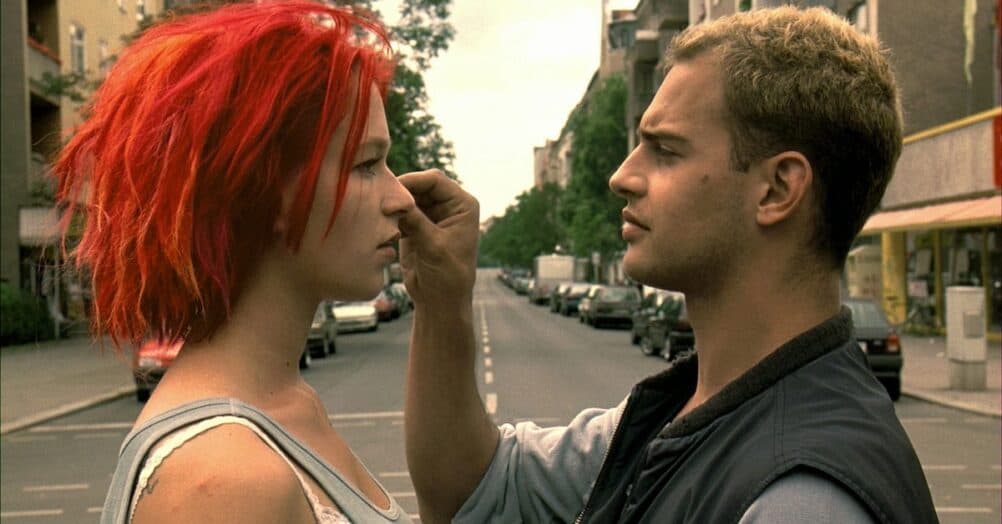
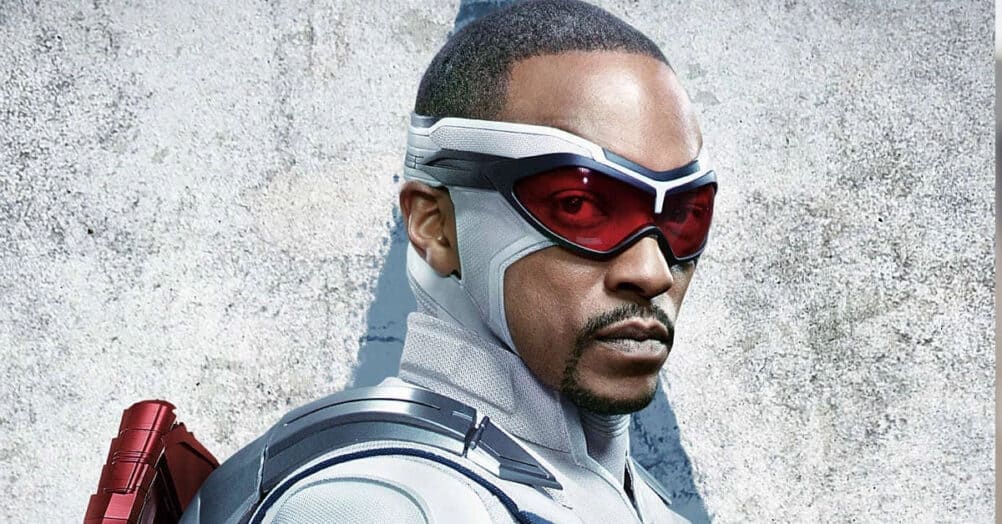
Follow the JOBLO MOVIE NETWORK
Follow us on YOUTUBE
Follow ARROW IN THE HEAD
Follow AITH on YOUTUBE